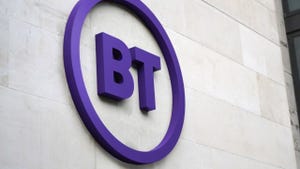How telcos are revitalising their business with improved customer experienceHow telcos are revitalising their business with improved customer experience
The European telecoms sector is undergoing a resurgence. French telco Orange has recorded its best quarter of growth in a decade while Spain’s Telefónica recently upgraded its revenue projections for 2017.
October 2, 2017

Telecoms.com periodically invites expert third parties to share their views on the industry’s most pressing issues. In this piece John Lenns, Vice President, Policy Products at Oracle Communications, celebrates the improving fortunes of some operators and looks at what might be behind it.
The European telecoms sector is undergoing a resurgence. French telco Orange has recorded its best quarter of growth in a decade while Spain’s Telefónica recently upgraded its revenue projections for 2017.
This marks a turning point for an industry that has struggled in recent years with falling revenues per user and price-sensitive consumers that are more prone to switching providers and less inclined to believe there is much to differentiate between competing when it comes to service. Indeed, a survey from Oracle Communications found that the only thing stopping 39 per cent of consumers from switching is that they believe competing Communications Service Providers (CSPs) will offer equally poor levels of service.
Success in today’s market hinges on a company’s ability to deliver a high quality personalised service, but achieving this and overcoming consumer apathy is no small task, particularly as over-the-top apps and software developers grow their market share and set new standards for digital customer experience. However, the investment is starting to pay off for CSPs such as Orange and Telefónica.
As Orange CEO Stéphane Richard commented after the company’s Q2 earnings announcement, “[Our] strategy… which centred on giving customers an unbeatable experience through convergence around the home and a quality network, is now yielding results”.
Getting more out of customer data
At the core of more personalised services is a better understanding of customers and the data they generate. For instance, Telefónica is using big data to better understand the usage patterns of its television audiences, which in turn allows it to offer people tailored recommendations based on their history, the context they are watching in, and even the time of day.
Telefónica’s deep customer understanding is also invaluable to advertisers and media distributors, who are intent on tailoring content to their audiences. By sharing anonymised “television intelligence” with content providers, Telefonica has found a way to further monetise its network while also winning over customers with a more relevant service.
Moving towards a virtual network
Keeping up with changing customer habits and technological change is a top priority that requires CSPs to quickly develop and roll out new services. This in turn demands new ways of working, which is why Network Function Virtualisation (NFV) and cloud-based systems continue to gain momentum among leading telcos.
Recent research from Oracle found that of CSPs that have already begun their shift to virtualised networks, 60 per cent expect this will help them improve their customer experience with new digital services. Seventy-one per cent believe a communications cloud will allow them to simplify their operations so they can achieve roll these services out more quickly and efficiently.
The transition to virtualised networks and the cloud is not a question of “if” but “when”. Those providers which have embraced change are not only seeing benefits in the way they work today but also gaining a significant head start in the eyes of customers.
Building a strong foundation
Even as CSPs look to strengthen their market position through new data-driven services, they cannot afford to forget the basics of great customer experience, which is where many disruptive competitors are raising the industry standard with simple and effective interfaces.
Customers value reliability above all else. Just as network coverage and consistent call quality were top priorities for mobile users in the pre-smartphone era, people now expect dependability from their data network. Without this, the “wow” factor of any new service is lost. After all, what good is a high definition media streaming app if videos hang and buffer, or a GPS app that cannot accurately pinpoint their location outside the city limits?
Simplicity and convenience are also crucial. People today have little patience for lengthy interactions with a service agent to manage even simple requests. To that end, Telefónica consolidated its customer databases onto a single system, reducing query times by 80% and improving self-service options for customer queries such as checking usage and billing.
The principles of customer service have not changed, but the channels, format and speed of change in the industry are virtually unrecognisable from just 10 years ago. This shift has come quickly and brought with it a host of new challenges, but CSPs are showing they can keep pace. By focussing on the foundations of excellent customer experience and capitalising on new technologies to deliver and build upon these, telcos can prove a positive start to 2017 is only the beginning of their resurgence.
 John Lenns is Vice President of Policy Products at Oracle Communications. He is responsible for driving the evolution of Oracle Communications Network Signaling and Policy Management Products from traditional 3GPP use cases towards new use cases including IoT, 5G, Enterprise and Cloud to Ground Markets.
John Lenns is Vice President of Policy Products at Oracle Communications. He is responsible for driving the evolution of Oracle Communications Network Signaling and Policy Management Products from traditional 3GPP use cases towards new use cases including IoT, 5G, Enterprise and Cloud to Ground Markets.
Read more about:
DiscussionAbout the Author
You May Also Like










.png?width=300&auto=webp&quality=80&disable=upscale)


_1.jpg?width=300&auto=webp&quality=80&disable=upscale)